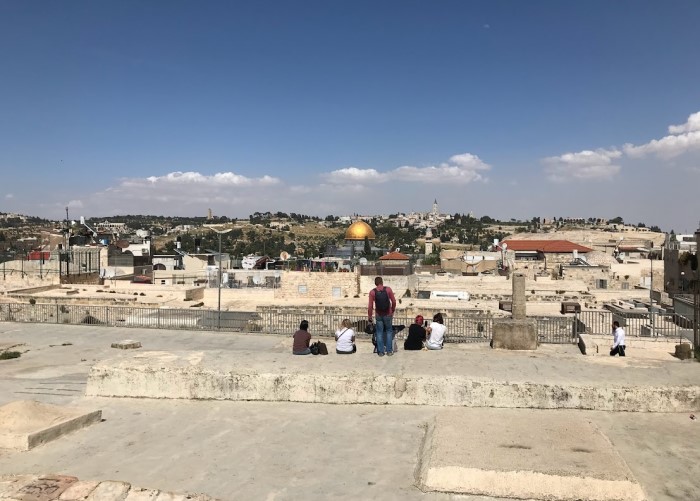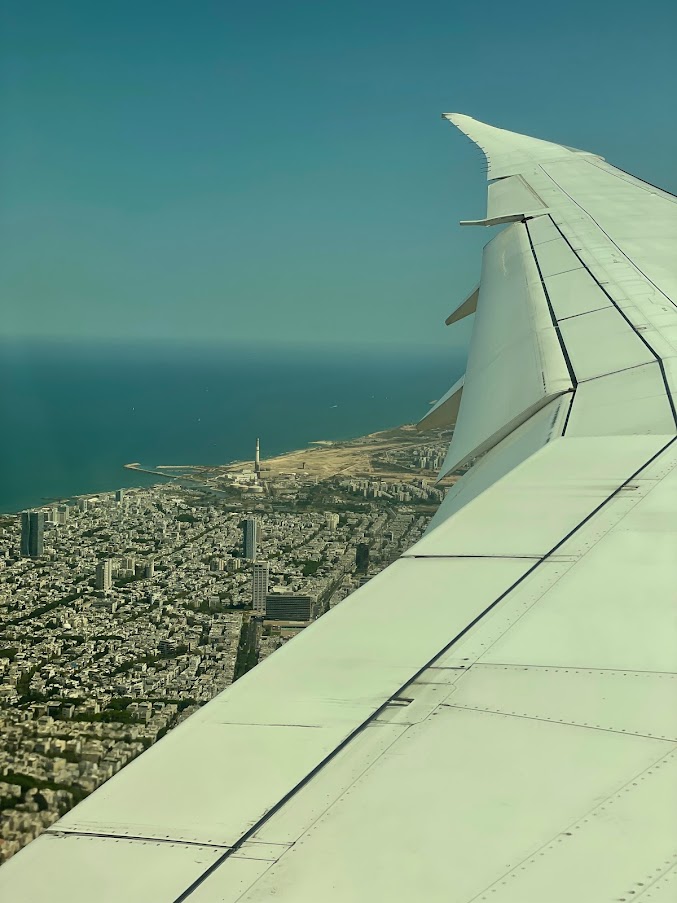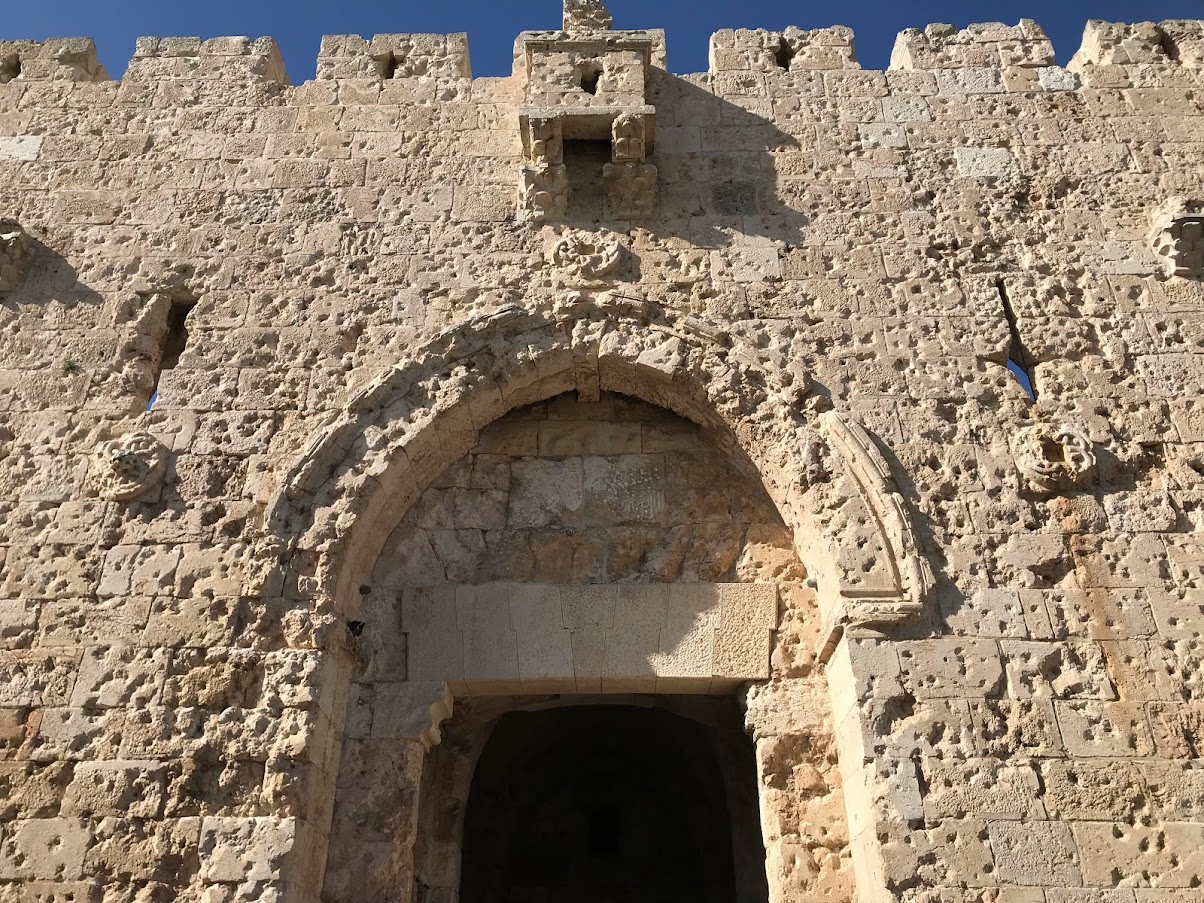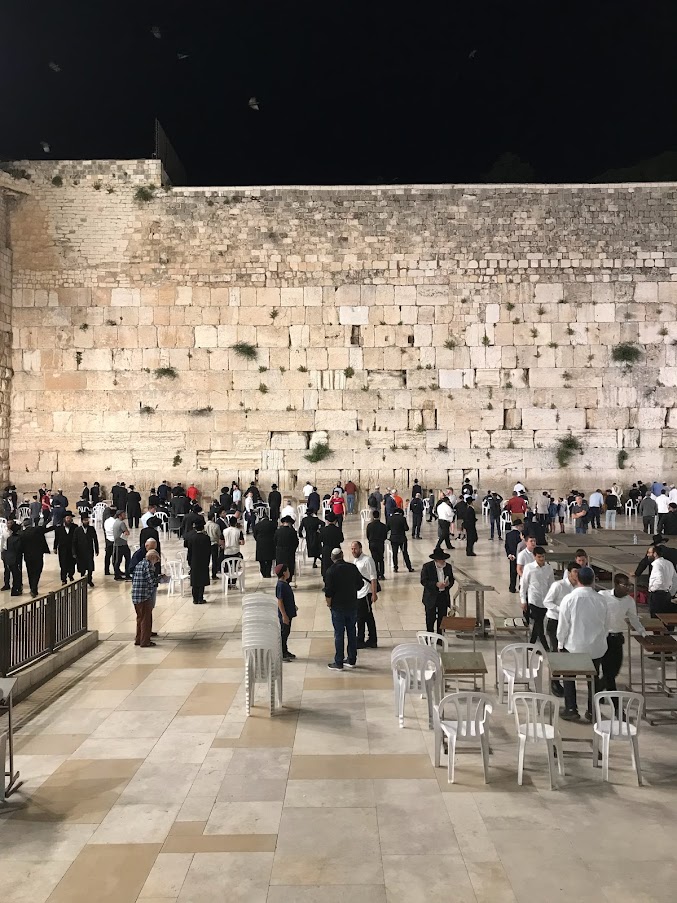Shalom from Jerusalem!
As we get ready for another day here (Israel is seven hours ahead of NJ), here are three summary snapshots from our long travel day yesterday.
Our flight was scheduled to take off from Newark at 4:30pm, but a mechanical problem (dented cargo door) delayed the flight by about 1.5 hours. This unexpectedly led to a gospel conversation with my seatmate, a middle-aged Jewish woman named Jill. Jill told us that she was part of a birthright moms trip to Israel that was all about bringing back Judaism to American families. When we told her that we were on a seminary study trip, she got really excited—because she thought we were Jewish! But when we told her that we were Christian, she was shocked. She asked me a question about whether believing in hell was supposed to lead Christians to good works, and I tried to explain to her from the Old Testament that good works could never save anyone, that even Abraham was justified by faith, and that God could only be both just and merciful in saving sinners by providing a once and for all sacrifice—which is what God did in Jesus! The conversation petered out after that. When the flight did get going, it was pretty smooth, and both Ema and I amazingly were able to sleep most of the way. After arrival into Tel Aviv, we felt very little jet lag.
Our first day was mostly about travel and adjustment, so nothing big was on the agenda. However, our trip leader, Dr. Grisanti (the students often call him “Dr. G”) did provide us with some fundamental overviews about Israel, Jerusalem, and Jerusalem’s important sites. Something that stuck out to me, though, both on the way to Jerusalem and in Jerusalem itself is Israel’s purposeful commemoration of its history and of the cost endured for Israel’s existence. For example, on the highway from Tel Aviv to Jerusalem, we passed a few rows of destroyed/disabled Israeli combat vehicles, while, in Jerusalem, a certain gate into the Jewish quarter still displays the damage done to the stone gate by bullets and shrapnel. Israel, of course, could have cleared the wrecks and repaired the gate but chose instead to preserve the memory of the struggles in its 1948 and 1967 wars and of the Jewish lives lost. Dr. G also mentioned that one of the reasons why Israel today is so committed to archaeological discovery and preservation within its borders is because Israel desires further proof that Israel’s history is true and that the country has the right to exist.
To help keep the group awake and able to more successfully adjust to the new time zone, Dr. G took us on an evening excursion to the Western Wall. Formerly known as the “Wailing Wall” when Jewish access to the site was more limited, the Western Wall of the Temple Mount is still considered one of the most sacred places for Jews to study and pray. According to Dr. G, Israel’s chief rabbi has forbidden observant Jews from stepping foot on the Temple Mount (lest they accidentally step where the Holy of Holies used to be). Thus, the Western Wall is the closest pious Jews can currently get to the Holy of Holies. Non-Jews are also allowed access to the site under certain conditions; we were asked to cover our heads with a hat or yarmulke and refrain from conversation or cell phone usage. As I walked through the men’s section of the Western Wall (women have a separate section), I was struck by how fervently many of the Jewish men were praying. I thought of Paul’s words in Romans 10:2, “For I testify about them that they have a zeal for God, but not in accordance with knowledge.” I slowly approached the wall myself to pray; with my hand on the wall, I thanked the Lord for the free access I and my fellow believers have to God through Christ apart from any well or temple, I prayed for God to open the eyes of the Jewish people—especially Jill who I spoke to this morning—-and I asked the Lord Jesus to return soon and set up his kingdom.




